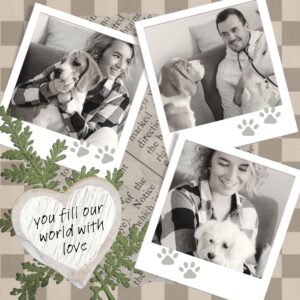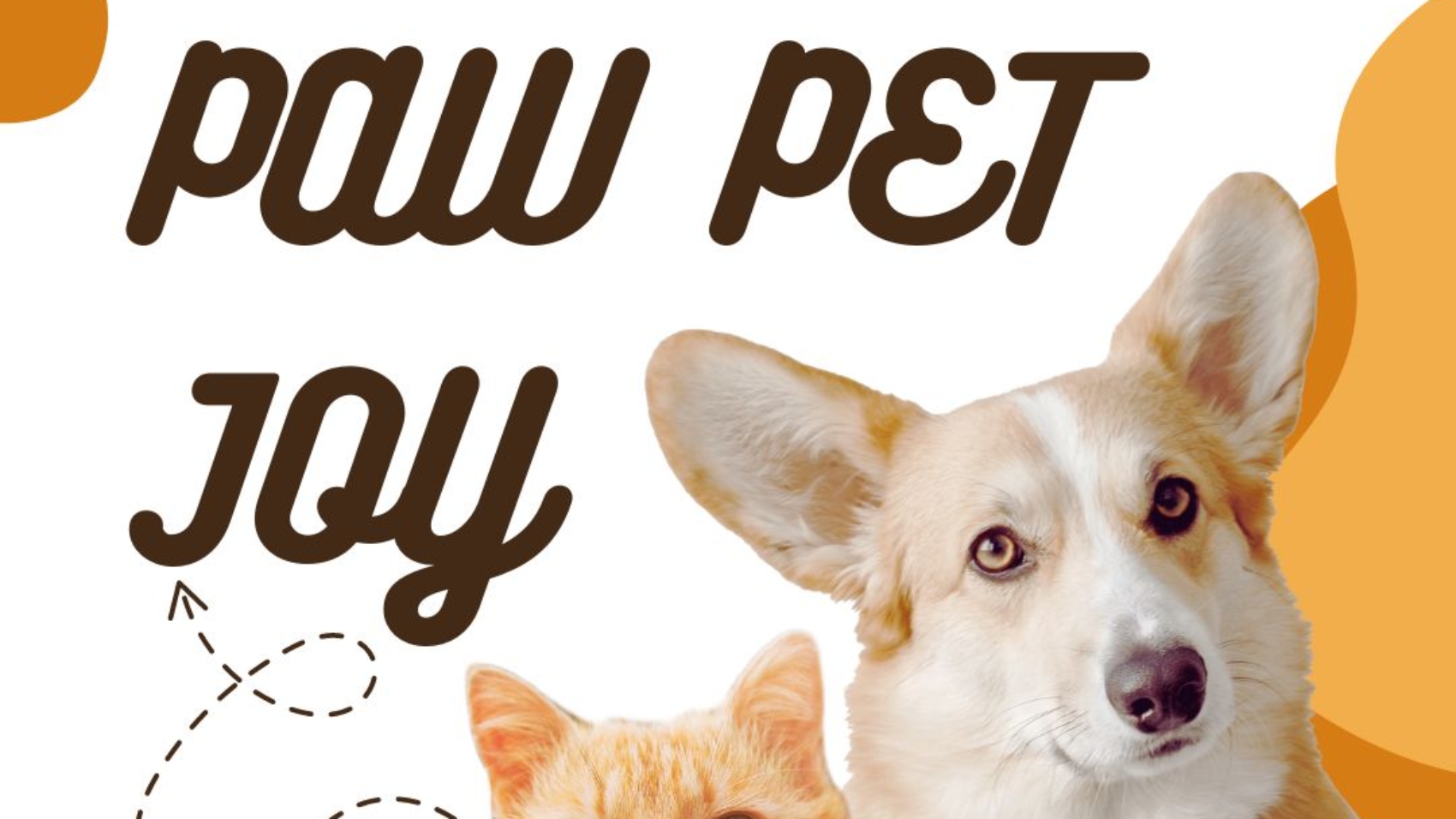Paw pet care! Pets are beloved members of our family. As pet owners, it is our responsibility to ensure that they are not only happy, but also healthy.

Introduction:
From providing them with nutritious food and regular exercise to keeping up with their grooming and veterinary care, there are many things we can do to ensure our pets live long, fulfilling lives. In this ultimate guide to paw pet care, we will explore all the ways in which you can keep your furry friend happy and healthy.
Whether you have a dog, cat, hamster, or any other type of pet, it is important to understand their unique needs and how to best meet them. Proper pet care involves much more than just providing food and water – it also means giving your pet love, attention, and mental stimulation. By taking the time to educate yourself on your pet’s specific requirements and providing them with the care they deserve, you can help ensure that they live a happy and healthy life by your side. So grab your furry friend and get ready to learn all about how you can keep them feeling their best with our ultimate guide to paw pet care.
Importance of Regular Exercise for your Pet
Healthy Diet Tips for a Happy Furry Friend
Grooming and Hygiene Practices for Paw-some Pets
Mental Stimulation and Enrichment Activities
Vet Visits and Preventative Care for a Long and Happy Life
Importance of Regular Exercise your paw Pet care

Regular exercise is crucial for maintaining the overall health and well-being of your furry friend. Just like humans, pets also need to stay active in order to prevent obesity, improve cardiovascular health, strengthen muscles, and boost their mental stimulation.
One of the most obvious benefits of regular exercise is weight management. Just like people, pets can become overweight if they consume more calories than they burn. This can lead to a whole host of health issues such as diabetes, arthritis, and respiratory problems. By incorporating regular exercise into your pet’s routine, you can help them maintain a healthy weight and reduce the risk of obesity-related illnesses.
In addition to the physical benefits Paw pet care exercise is also important for your pet’s mental health. Just like humans, pets can experience stress, anxiety, and boredom. Regular exercise provides an outlet for them to release pent-up energy, reduce stress, and keep their minds active. This mental stimulation can help prevent behavioral issues such as chewing, excessive barking, and aggression.
Another important aspect of regular exercise is socialization. Taking your pet for walks, to the dog park, or to obedience classes provides valuable opportunities for them to interact with other animals and people. This socialization can help improve their confidence, reduce anxiety, and strengthen their bond with you as their owner.
.It’s important to remember that every pet is unique, so it’s essential to consult with your veterinarian before starting any new exercise routine. They can provide guidance on the appropriate amount and type of exercise for your pet based on their age, breed, weight, and overall health.
Healthy Diet Tips for a Happy Furry Friend paw pet care
Your Paw pet care health is in your hands, and one of the best ways to keep them happy and healthy is by providing them with a nutritious diet. Just like us, pets need a well-balanced diet to thrive and live a long, healthy life.

When it comes to choosing the right food for your pet, it’s important to consider their age, size, breed, and any specific dietary needs they may have. Consult with your veterinarian to determine the best type of food for your pet, whether it’s dry kibble, wet food, raw food, or a combination of them.
Always check the ingredients list on pet food labels to ensure that your furry friend is getting the nourishment they need. Look for high-quality proteins like chicken, fish, or beef as the first ingredient, as well as whole grains, fruits, and vegetables for a well-rounded diet. Avoid foods that are high in fillers, artificial additives, and preservatives that could be harmful to your pet’s health.
In addition to their main meals, incorporate healthy snacks and treats into your pet’s diet to provide them with a variety of nutrients and keep their taste buds satisfied. However, be mindful of the calorie content of treats and avoid overindulging your pet, as excessive snacking can lead to weight gain.
It’s also essential to ensure that your pet has access to fresh, clean water at all times. Hydration is crucial for your pet’s overall health, as it helps regulate body temperature, aids in digestion, and removes toxins from the body. Make sure to change your pet’s water bowl daily and clean it regularly to prevent bacteria growth.
If your pet has special dietary needs or health concerns, such as allergies, obesity, diabetes, or digestive issues, work closely with your veterinarian to develop a tailored nutrition plan. Your vet may recommend a specific type of food, portion sizes, or dietary supplements to address your pet’s unique needs and support their health.
Remember, a healthy diet is just one component of your pet’s overall well-being. Regular exercise, mental stimulation, grooming, and veterinary check-ups are also important for keeping your furry friend happy and healthy. By providing your pet with a nutritious diet and proper care, you can ensure that they live a long, vibrant life by your side.
Grooming and Hygiene Practices for Paw Pets care
Grooming and hygiene are essential components of caring for your furry friend. Regular grooming not only keeps your pet looking their best, but it also helps to prevent health issues such as mats, skin infections, and parasites. Here are some tips to ensure your pet’s grooming needs are taken care of Paw pet care.
First and foremost, make sure to brush your pet regularly. The frequency of brushing will depend on your pet’s coat type, but most pets benefit from a good brushing at least a few times a week. Brushing helps remove loose fur, dirt, and tangles, preventing mats from forming. It also stimulates your pet’s skin and distributes natural oils for a healthy coat.
In addition to brushing, regular baths are also important for your pet’s hygiene. Be sure to use a mild pet shampoo that is specifically formulated for your pet’s species and coat type. Avoid using human shampoos or harsh chemicals, as they can be too harsh for your pet’s skin. When bathing your pet, make sure to thoroughly rinse out all shampoo to prevent irritation.
Maintaining your pet’s oral hygiene is just as crucial as grooming the rest of their body. Dental disease is one of the most common health issues in pets, so be sure to brush your pet’s teeth regularly. You can use a pet-specific toothbrush and toothpaste to keep their teeth clean and their breath fresh. Additionally, providing dental chews and toys can help reduce plaque and tartar buildup.
Don’t forget about your pet’s nails! Overgrown nails can be painful for your pet and can cause issues with their gait and posture. Trim your pet’s nails regularly, being careful not to cut the quick (the blood vessel inside the nail). If you’re unsure how to trim your pet’s nails, ask your veterinarian or groomer for assistance.
Regularly checking and cleaning your pet’s ears is also important for their overall health. Check your pet’s ears for signs of redness, swelling, or discharge, which can indicate an infection. Use a gentle ear cleaner recommended by your veterinarian to clean your pet’s ears, being careful not to insert anything into their ear canal.
Lastly, be sure to keep an eye on your pet’s eyes. Wipe away any discharge from the corners of their eyes with a damp cloth to prevent eye infections. If you notice any redness, swelling, or discharge in your pet’s eyes, consult your veterinarian for further evaluation.
Remember, grooming and hygiene practices are not only about keeping your pet looking their best – they are essential for maintaining your pet’s overall health and well-being. By incorporating these grooming habits into your pet care routine, you can help keep your furry friend happy, healthy, and paw-some for years to come.
Mental Stimulation and Enrichment Activities paw pet care
Pets, just like humans, need mental stimulation and enrichment to thrive and live their best lives. Providing your Paw Pet Care with activities that engage their brain and keep them entertained is essential for their overall well-being.

There are many ways you can incorporate mental stimulation into your pet’s daily routine. One simple way is to introduce puzzle toys or interactive games that require them to problem solve and use their cognitive skills. These toys can range from treat-dispensing puzzles to toys that require them to slide or push levers in order to access a reward. Not only do these toys provide mental stimulation, but they also help prevent boredom and keep your pet engaged and active.
Another great way to keep your pet mentally stimulated is through training and obedience exercises. Teaching your pet new tricks or commands not only strengthens the bond between you and your Paw Pet Care, but it also challenges their mind and keeps them learning and growing. Whether it’s mastering basic commands like sit or stay, or more complex tricks like roll over or play dead, training sessions are a fun way to keep your pet mentally sharp and engaged.
Engaging in interactive playtime with your pet is another great way to keep them mentally stimulated. Whether it’s chasing a laser pointer, playing fetch, or engaging in a lively game of tug-of-war, interactive playtime not only provides physical exercise but also stimulates your pet’s mind and keeps them mentally engaged. By varying the types of toys and games you play with your pet, you can continue to challenge their cognitive skills and keep them mentally sharp.
Finally, incorporating mental enrichment activities into your pet’s routine is not only important for their cognitive health but also for their overall well-being. Pets that are mentally stimulated and engaged are happier, more content, and less likely to exhibit destructive behaviors out of boredom. By providing your pet with activities that engage their brain and challenge their mind, you are not only keeping them happy and healthy but also strengthening the bond between you and your Paw Pet Care
Vet Visits and Preventative Care for a Long and Happy Life
Regular vet visits are essential for maintaining your pet’s overall health and well-being. Just like us, our paw pet care need regular check-ups to ensure they are in good health and to catch any potential issues early.
At the vet, your pet will receive a thorough physical exam, during which the vet will check for any signs of illness or disease. It’s important to follow your vet’s recommended schedule for vaccinations and preventative treatments to protect your pet from common illnesses and parasites.
It’s also a good idea to discuss with your vet about spaying or neutering your pet if you haven’t already done so. Not only does this help control the pet population, but it can also prevent certain health issues and behavioral problems in your furry friend.
Dental care is another important aspect of your pet’s overall health. Just like us, pets can develop dental problems, such as gum disease and tooth decay. Regular dental check-ups and cleanings can help prevent these issues and keep your pet’s teeth healthy and strong Paw pet care.
Paw pet care In addition to regular vet visits, there are several preventative paw pet care measures you can take at home to keep your pet healthy. Making sure your pet gets plenty of exercise and a balanced diet will help prevent obesity and keep them at a healthy weight. Obesity can lead to a variety of health problems, so it’s important to monitor your pet’s weight and adjust their diet and exercise routine as needed.
Another important aspect of preventative care is parasite control. Fleas, ticks, and worms can all pose a threat to your pet’s health, so it’s important to use preventative medications recommended by your vet to keep them at bay. Regularly checking your pet for any signs of parasites is also important, as early detection can help prevent further infestation.
What is Paw Pet Care?
Paw Pet Care is a comprehensive approach to ensuring the health, well-being, and happiness of your beloved pets, with a specific focus on their paws. It encompasses various practices and routines aimed at maintaining the optimal condition of your pet’s paws.
Why is paw care important for pets?
Paw care is crucial for pets because their paws are their primary mode of mobility and interaction with their environment. Proper paw care helps prevent injuries, infections, and discomfort, ensuring your pet can move around comfortably and engage in activities without hindrance.
What are some common paw care practices?
Common paw care practices include regular inspection for cuts, scrapes, or foreign objects lodged in the paw pads, trimming of overgrown nails, moisturizing dry paw pads, and protecting paws from extreme weather conditions such as hot pavement or icy surfaces.
How can I trim my pet’s nails safely?
Trimming your pet’s nails requires caution to avoid cutting the quick, which can cause bleeding and pain. Use pet-specific nail trimmers and trim small amounts at a time, stopping if you see a pinkish area inside the nail (the quick). If you’re unsure, consult a professional groomer or veterinarian for guidance.
How can I protect my pet’s paws during hot weather?
To protect your pet’s paws during hot weather, avoid walking them on hot pavement or surfaces during the hottest parts of the day. Opt for walks in the early morning or late evening when temperatures are cooler, or consider using protective booties designed for pets to shield their paws from heat.
What about paw care for pets in cold weather?
In cold weather, protect your pet’s paws from ice, snow, and chemical deicers by wiping their paws with a damp cloth after walks to remove any ice or salt. Consider using pet-safe de-icing products on your own property, and provide your pet with booties or paw pet care wax for added protection against cold surfaces.
What are some signs of paw-related problems in pets?
Signs of paw pet care-related problems in pets may include limping, licking or chewing at the paws excessively, redness or swelling, changes in gait or posture, and reluctance to walk or engage in physical activity. If you notice any of these signs, consult your veterinarian for further evaluation and treatment.
Conclusion:
Taking care of your paw pet care is a rewarding experience that requires love, patience, and dedication. By following the tips outlined in this guide, you can ensure that your pet stays happy and healthy for years to come. Remember to provide proper nutrition, regular exercise, mental stimulation, and plenty of love and affection. Your paw pet care will thank you with wagging tails and wet kisses!

Leave A Comment